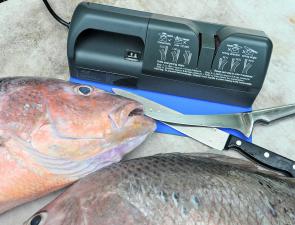This month it’s time to get stuck in and start cleaning what you’ve caught!
As I said last month in this column, no one really enjoys cleaning fish (well, no sane person, anyway!). Cleaning the catch is one of the downsides of catch-and-kill fishing, but it’s also an essential chore if you wish to enjoy (and even share) the fruits of your passion.
The best piece of advice I can give you about cleaning fish is not to put it off too long; roll up your sleeves and get to work! Ideally you want to do it while you’re still smelly, sweaty and dirty from a day on the water. Don’t be shy and don’t hang back. If you can peel an orange, carve a roast, slice a cake or cut the rind off a rasher of bacon, you can certainly clean a fish.
As a general rule, the sooner you clean the catch, the better the end result. The final product will be much tastier and more nutritious, too. If you can leave, in this relatively short time frame between capture and processing, an hour or three for chilling the catch on ice or in a slurry made from ice and seawater, so much the better. Chilling the fish in this way makes their flesh firmer and even easier to handle.
Importantly, a number of States and Territories nowadays ban the filleting, skinning or other dismembering and processing of fish carcasses while you’re still out on the water, or demand that if you do fillet the catch, a small patch of skin and scales is left on each fillet. The reason for this is to allow fisheries inspectors or other authorities to accurately identify your catch when checking for breaches of size, bag or protected species regulations.
Nevertheless, you’re certainly allowed to bleed and gut your fish immediately, as long as the inspector can still identify the species and measure its overall length. In a few States you may need to clip one of the fish’s fins. Check all of these regulations carefully before you fish and keep up with any changes.
The three main methods of cleaning fish are: gutting and gilling, filleting (with or without skinning), and steaking or cutleting. Each has its positive and negative points.
Perhaps the easiest and most common way to clean a fish is to use a sharp knife to make one long cut from the fish’s vent or anus all the way forward along the belly and through the throat latch area under the gills. For safety’s sake, make sure you always slide the knife away from yourself while doing this. After slitting the fish open, remove the internal organs and gill arches by pulling them out with your hands.
When opening the stomach cavity of a fish, try to limit the depth of the cut and avoid slicing into the internal organs, allowing the contents to spill out. Remember that the stomach wall is usually only a few millimetres thick (even in reasonably large fish), so don’t hack too deeply. Spilt stomach contents and bile can degrade the quality of the fish’s flesh.
If you take the time to study the physiology of the first few fish you open up this way, you can learn how to remove the internal organs and the gill structure in one or two large pieces with the minimum of fuss and mess.
Most fish have a dark red, blood-rich organ running along the top of the stomach cavity, under the backbone and separated from the other internal organs by a thin membrane. This is actually the fish’s kidney and although the organ can be tricky to remove, doing so greatly improves the keeping qualities of most fish. You can use various tools to remove the kidney including the blade of a knife, a nail brush with stiff bristles, an old teaspoon or even a toothbrush. (Don’t use your own toothbrush, as doing so is likely to leave a bad taste in your mouth! Pick an old one… or use your mate’s!)
Thorough gutting and gilling of fish (including the careful removal of that blood-rich kidney) significantly slows the deterioration of the catch and is highly advisable if you intend to keep fish in top condition for a day or more, cook them whole, or even to fillet them later.
In future issues, we’ll look at filleting, skinning and various other methods of preparing the catch for cooking.
Reads: 5386
A good catch of flathead and bream and a sharp knife – time to get to work!

Sharp knives are essential for effective fish cleaning. Starlo swears by his Nirey electric knife sharpener for keeping a wickedly keen edge on his blades.

Freshly filleted and ready for cooking. You can’t beat self-caught seafood!




